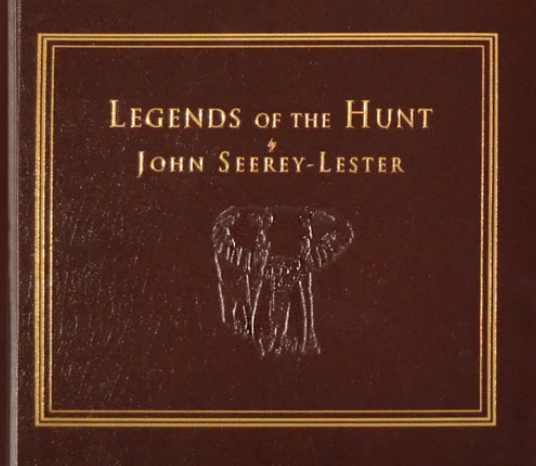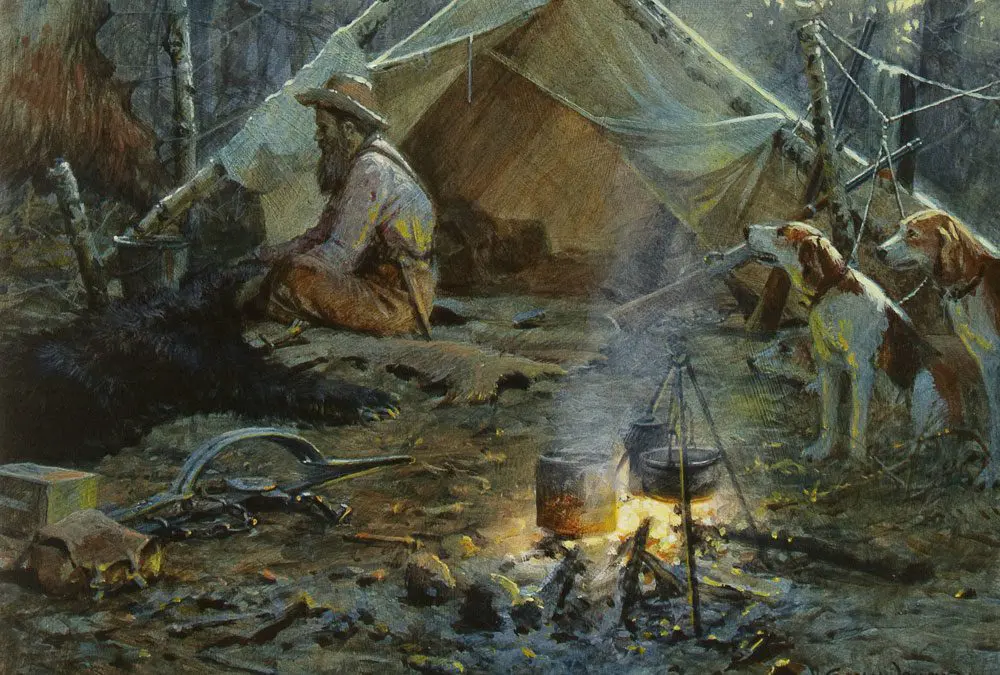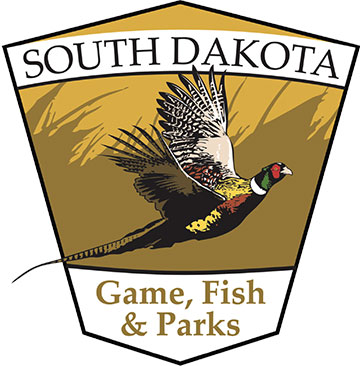A hunter extraordinaire, Ben Lilly was regarded by his contemporaries as one of the greatest bear-slayers of his time.
Ben Lilly was a loner who spent most of his life obsessively eradicating bears and mountain lions for ranchers and settlers.
His California predecessor, “Grizzly Adams” may have acquired more fame through the writings of Theodore H. Hittell in the mid-1800s and later in television shows, but Lilly’s exploits over a 60-year period outrank anything that came before or since.
Lilly was married twice and tried unsuccessfully to settle down to farming, which he found too restrictive. He really wanted to hunt and he spent all his spare time in this pursuit. He had a reputation as an honest man who didn’t drink – not even coffee – and who never cursed. Lilly would not hunt on Sundays, even when he had finally closed in on his quarry.
He was a well-liked, soft-spoken man who meant what he said. This stood in stark contrast to how he treated animals. He would shoot any dog that disobeyed him and would do the same to a horse that caused trouble. He treated all wildlife with indifference and as nothing more than potential targets. He had no conservation ethic whatsoever.
Lilly hunted and camped alone, enduring every imaginable weather condition, which set him apart from many other outdoorsmen. He was well known for his endurance when tracking, and especially for his speed and long-distance running ability. Rare was the hunter who could match his pace. But despite his super-human qualities as a runner, he never did learn to swim.
His obsession with hunting grizzlies and lions took him away from home more and more often. Finally, in 1901 at age 45, he abandoned his wife and family so he could stalk the wilds of Louisiana year-round.
At this time Lilly was persuaded to devote his hunting skills to collecting scientific specimens for the National Museum of Natural History. He acquired many different animals, including the ivory-billed woodpecker, passenger pigeon and the Louisiana wolf and bear, all of which are now extinct.
In 1906, not long after killing his 180th bruin, Lilly was hired as hunt master for Theodore Roosevelt’s expedition in the Big Thicket of Texas, where Lilly was based at that time. Ben was not cut out as a guide and hated hunting with an entourage. He soon showed his disdain for his duties, and the President let him go, later referring to him as a “religious fanatic.”
A couple of years later Lilly worked his way down the Texas Gulf Coast and entered Mexico at Eagle Pass. There, he eked out a living selling venison jerky to villagers, and sending skins and skulls to the National Museum. In 1911, at age 55, he returned to the U.S. where he would undertake one of his most remarkable feats.
Lilly was trailing a mountain lion when he and his airedale jumped a full-grown grizzly, which had just come out of hibernation.
The tracks showed the bear was missing two toes. He trailed the bear on foot for three days as far as the San Luis Mountains in Chihuahua. Ill-equipped, Lilly returned to America, bought some supplies and traps, then two weeks later arrived back in the mountains where amazingly, he managed to pick up the bear’s trail.
He would kill a mountain lion and two black bears before catching up to the grizzly. He eventually snared the massive bear in a trap, but it dug its way out and took the trap with him. Lilly doggedly followed the massive grizzly and the trap’s drag marks into Sonora. Then, still on foot, he headed off and killed the bear before it reached the Animas Mountains. Lilly claimed he had tracked the bear through three states and two countries. The skin and skull were sent to the National Museum.
By 1928, after killing hundreds of bears and lions, Lilly was getting about $100 per animal. By that time, however, both species had become scarce. Despite his many hand-to-claw combats, he eventually retired and died peacefully in 1936 on Grant County Farm, New Mexico, just before his 80th birthday, without a gun or a dog.
 Legends of the Hunt features a stunning gallery of 105 John Seerey-Lester paintings and a fascinating collection of more that 80 stories, all reliving the exciting adventures of the world’s greatest sportsmen and explorers between the years 1849 and 1933. Buy Now
Legends of the Hunt features a stunning gallery of 105 John Seerey-Lester paintings and a fascinating collection of more that 80 stories, all reliving the exciting adventures of the world’s greatest sportsmen and explorers between the years 1849 and 1933. Buy Now




